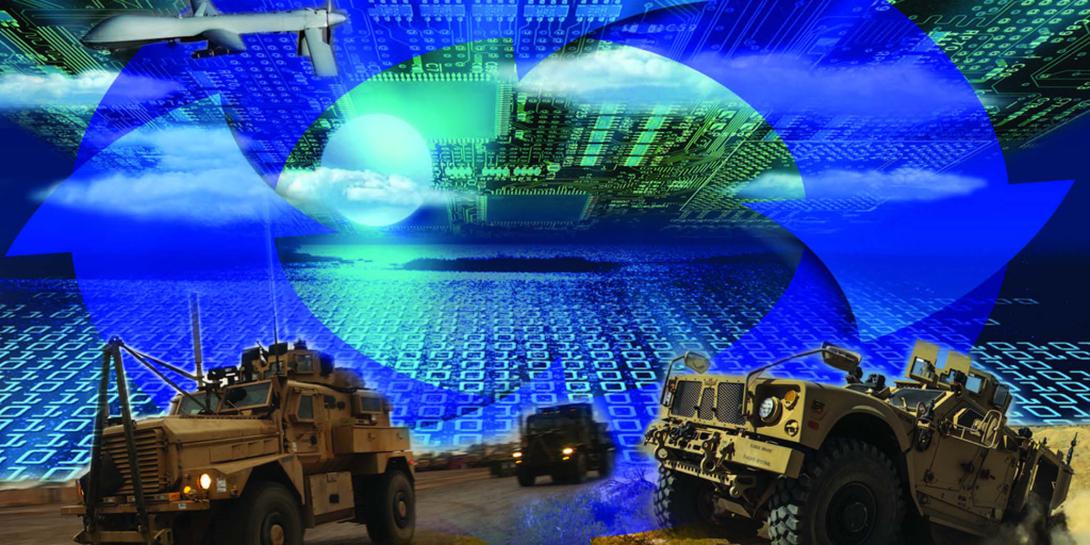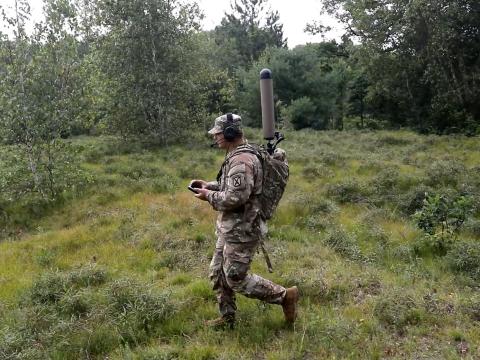Greater Integration Across the EMS Needed for Battlefield Dominance
There’s no disputing technology’s role in the rapidly changing face of modern warfare. The convergence of commercial services with military applications, such as delivery of real-time data from anywhere using various devices, has changed what constitutes a combat environment. The U.S. military seeks to define a strategic approach to these converged operations. Time is of the essence, writes Kenneth Parks of Harris Corporation.
There’s no disputing technology’s role in the rapidly changing face of modern warfare. The convergence of commercial services with military applications, such as delivery of real-time data from anywhere using various devices, has changed the physical nature and understanding of what constitutes a combat environment. The U.S. military seeks to define a strategic approach to these converged operations.
The collection, exploitation and transmission of digital information takes many forms across the electromagnetic spectrum. U.S. adversaries use integrated concepts that combine tools such as cyber operations with electronic warfare (EW), a trend the military is addressing by removing barriers to operational silos and taking advantage of the speed, scale and flexibility offered by cyber capabilities combined with EW.
Assuring information dominance across the spectrum is an imperative that cannot be overlooked. Properly linking EW and cyber systems for multidomain operations will be needed to overcome rapidly evolving technical challenges. Access to information and flexible capabilities at operational speed is necessary to address the next phase of operational threats and adversarial technologies.
Fewer resources needed to disrupt networks and communications
The proliferation of connected devices has created a huge reliance on the finite radio frequency (RF) spectrum, both in the military and commercial sectors. Battlefields today, such as those in Ukraine and Syria, are proving grounds for adversaries combining the tools at their disposal to multiply the impact of their limited resources.
Disrupting operations using these combined tools no longer requires kinetic or a physical presence to have an impact. Working from remote locations, adversaries can jam communications while simultaneously probing for other vulnerabilities at machine speeds, which can overwhelm battlefield systems. The Defense Department has launched its third offset strategy, which stresses innovation to maintain the country’s technological advantage over its adversaries. It is difficult to definitively state what will be the most effective outputs from merging EW and cyber capabilities. It is important to continue research and field-testing solutions to maintain our progress while making any course corrections as new challenges are identified.
Defining responsibility and operational flexibility
Military leaders search for the best methods to define and operationalize efficient tactics to turn the competing priorities of speed, security and cost into advantages. As it stands, there is no one set definition of what EW is, and how it relates to incorporating cyber tools.
In a conventional sense, EW is a transient effect as it only has an impact when it is actively engaged. For example, with jamming tools, once the RF signal no longer is directed actively, the effect goes away. Once inserted into a network, cyber operations can be fleeting or persistent. Determining the appropriate mission tools can mean going through multiple chains of command, which slows the process, adds complexity and puts operators at a disadvantage.
The longer officials wait to put a stake in the ground, the further behind the DOD will fall. This is not an easy fix, complicated by competing priorities and immense institutional inertia. New doctrine is needed to guide investment in training and equipment, and to maintain flexibility as emerging concepts challenge the status quo. When dealing with machine learning and speed of development, we can no longer afford to sit with a stagnant operating procedure and defined rules that are inflexible.
It is acceptable to not have a perfect answer here, as with many technology issues, these ideas are still being discussed, but we need to iterate and get better faster.
Building out the force: capability and personnel
DOD planners in the final stages of drafting the first departmentwide electronic warfare strategy to provide greater guidance on synchronizing cyber and EW operations for combined effects. However, this work is useless without integrated capabilities and the personnel to activate them.
Electromagnetic spectrum capabilities still are largely viewed in silos for specific missions. The military must train operators to function in increasingly congested and contested information environments, including elements of collaboration among the services and simulations of enemy effects. As battlefield complexity increases, warfighters must be prepared to take on both low- and high-end threats.
Current status and the path forward
While there is a sense that the United States has fallen behind in strategically combining cyber and EW operations because of a traditionally segmented approach, there is a tremendous amount of opportunity to apply existing capabilities to regain spectrum dominance.
Deploying EW and cyber capabilities in a coordinated fashion creates a force multiplier to ensure information superiority across operational domains—physical and electromagnetic. Hardware and software exist that can tackle many operational challenges. As long as they are applied correctly, they can improve the speed and accuracy of decision making, ensure access to information and be deployed to deny those same benefits to adversaries.
EW and cyber effects will be delivered via multifunctional, software-defined hardware; meaning a single device configured to meet multiple missions.
Capt. Kenneth “Kilo” Parks, USN (Ret.) is a senior manager of business development for the electronic warfare business area at Harris Corporation. He served more than 26 years in the Navy as an electronic countermeasures officer. He recently moderated a panel discussion focused on electronic warfare and spectrum operations at this year’s AFCEA MILCOM conference in Baltimore.



Comments